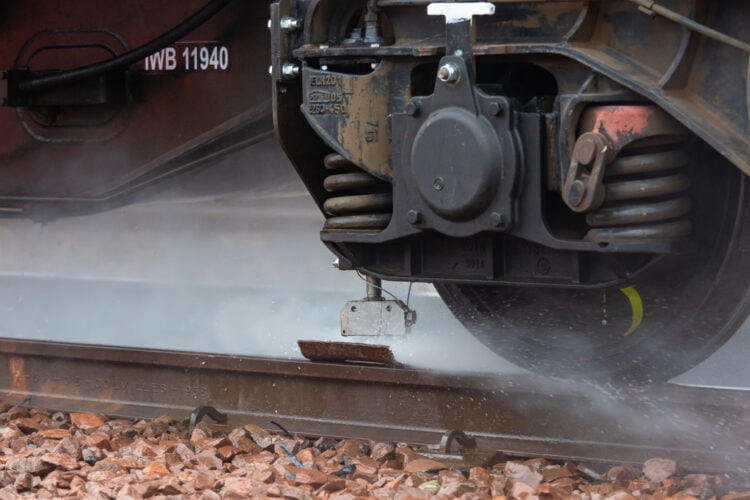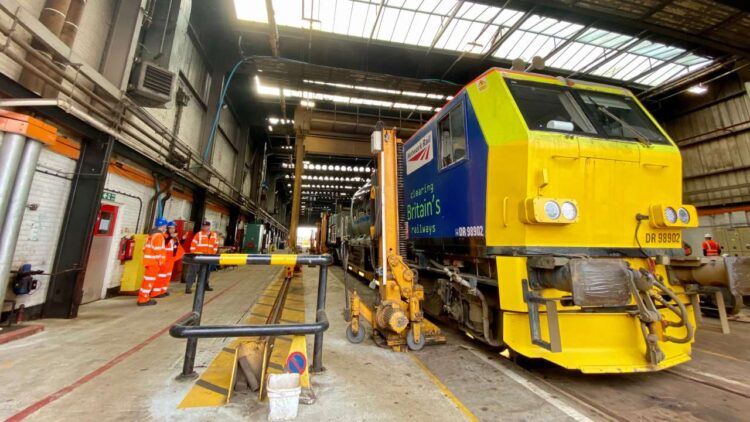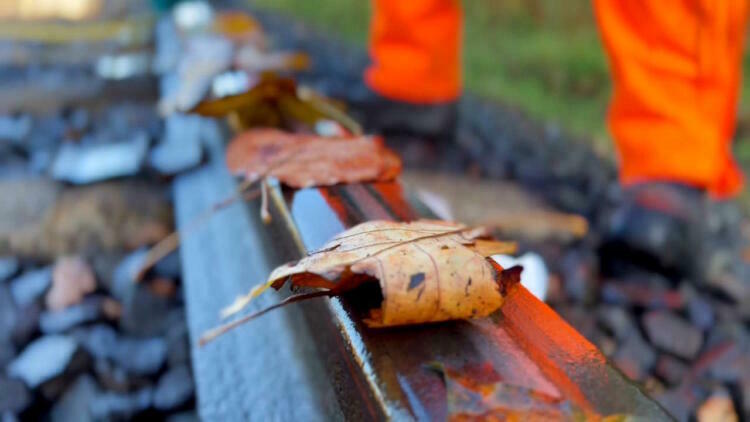Network Rail’s leaf-busting trains began their work on West Midlands rail routes earlier this month and will continue until mid-December.
The fleet of six specialist trains is working to remove leaves from lines across the West Midlands, West Coast and Chiltern main lines this autumn. Following a successful pilot last year, the trains will be assisted by aerial drones, which Network Rail is deploying across its Central and West Coast South routes, monitoring known ‘hotspots’ where falling leaves can cause the worst disruption.

In a new initiative, remote cameras will be placed in three locations most vulnerable to leaf fall disruption. Through these, control rooms will be able to observe conditions in real time, so can send track teams to clear the railway as quickly as possible.
The trains will treat 100,946 miles of track across the region throughout the leaf fall season. This represents 20% more track than was treated last year, and is the equivalent of going almost four times around the equator.

Leaves cause problems when they fall on the line, stick to damp rails, and are compressed by moving trains into a thin, black layer which can affect train braking and acceleration in a similar way to the impact of black ice on roads. Leaf mulch build-up also interferes with the working of track sensors, so control rooms can no longer see exactly where all trains are located.
The region’s leaf-clearing operation is being run from the seasonal delivery depot at Kings Norton in Birmingham. From there, work will be co-ordinated to keep trains running on the West Midlands, West Coast main line to Euston and Chiltern main line to Marylebone. Specialist teams will be deployed around the region to check that the treatment programme is working effectively and to provide extra support.
Three MPVs (multi-purpose vehicles) and three RHTTs (rail head treatment trains) will operate from the Kings Norton depot. The trains use high pressure water jets to clear leaves from the line, and then apply rails with a glue-like coating which helps train wheels grip the tracks. 108 traction gel applicators have been positioned across the Central route, which spray a special sand-like gel onto the rails.
Last year, Network Rail spent £4.5 million on a similar operation in the region.

Martin Colmey, operations director for Network Rail’s Central route, said: “Leaves on the line are a big problem for the railway. It disrupts services and inconveniences passengers and every year, Network Rail and train operators work together to battle against the elements to get passengers and freight to their destinations.
“We are ready to keep people and goods moving across the West Midlands and Chiltern Main line running a safe and reliable service for our customers.”






Responses